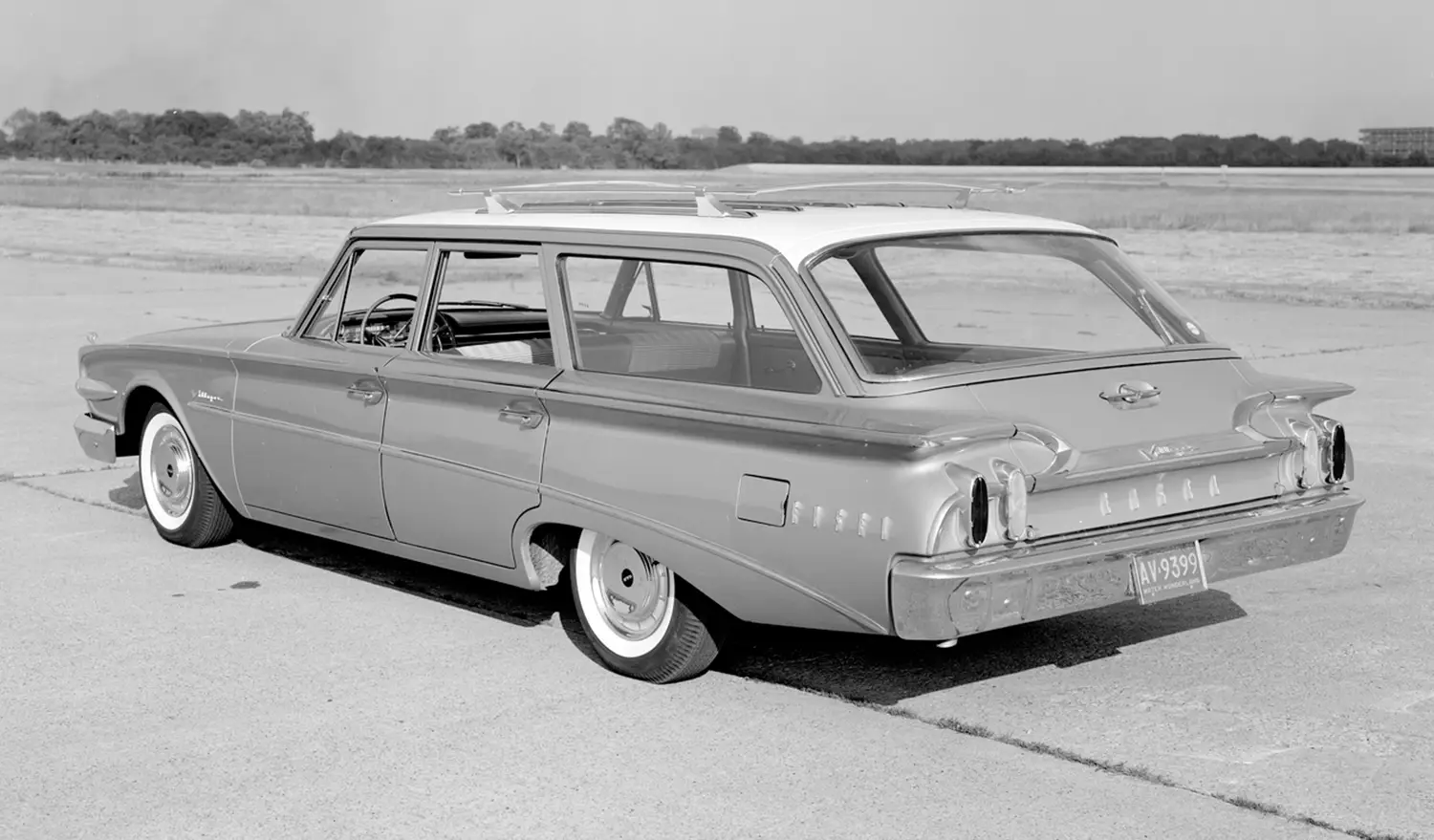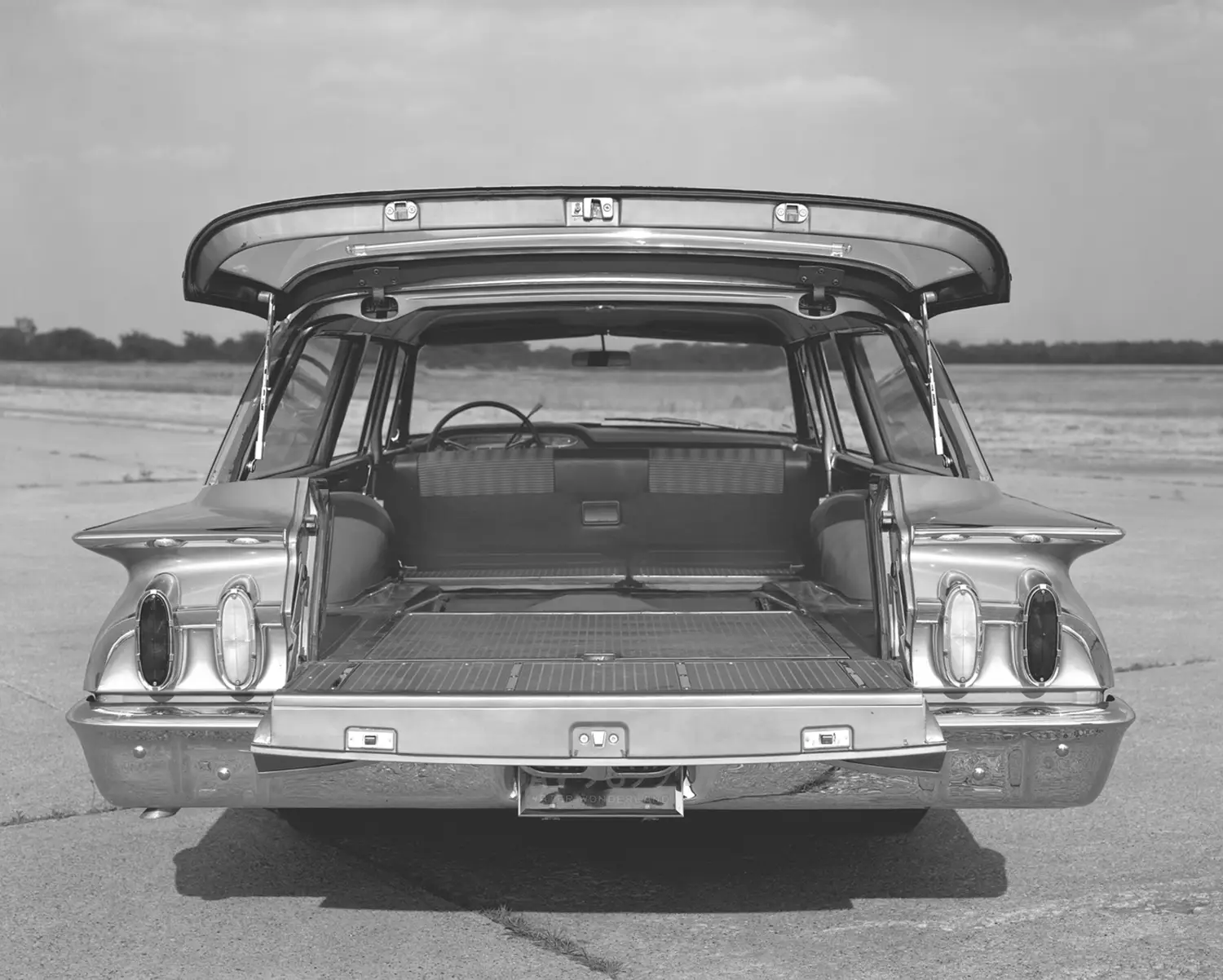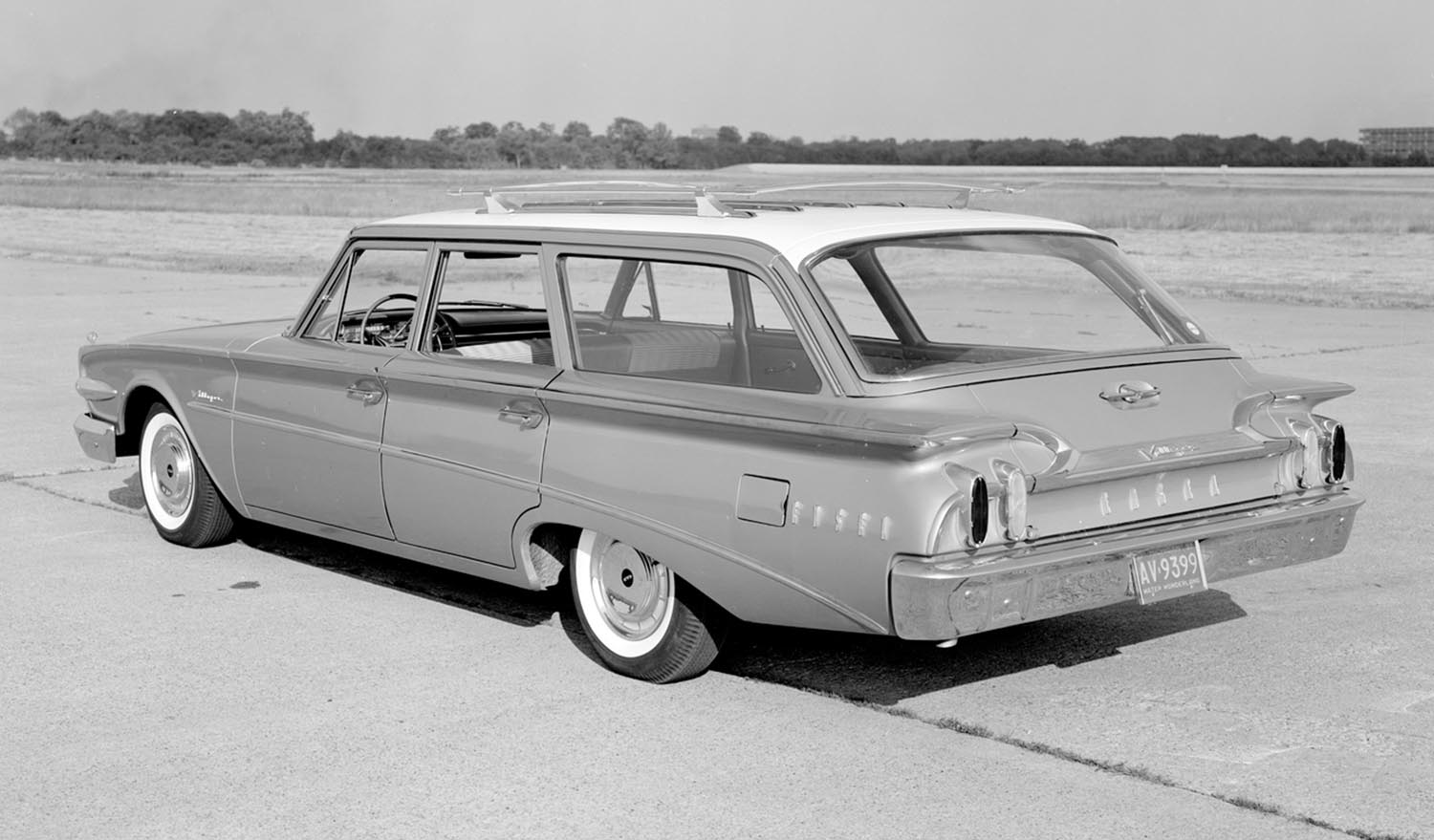
When you see a 1960 Edsel Villager station wagon today, you are looking at a rare piece of automotive history. This vehicle represents the final chapter of a brand that was born with great ambition. Its story is a complex one of big ideas and market realities. The 1960 Edsel Villager station wagon, in particular, showcases the brand’s final efforts to win over the American public. It was a vehicle designed to be practical. At the same time, it offered a different kind of style.
The Final Year’s Bold Redesign
For its final year, Edsel’s design team moved away from the controversial “horse-collar” grille. The 1960 models, including the Villager, adopted a new front-end look. This design featured a horizontal, hourglass-shaped grille. This gave the car a cleaner, more conventional face. The rear of the car was also new. It featured a distinctive set of four vertical oval taillights. These design changes were meant to be a fresh start. They helped the 1960 Villager stand apart. It shared many body panels with the Ford Country Sedan. However, its unique trim and styling made it an Edsel.
A Short but Significant History
The Edsel brand had a very short lifespan. It was launched in 1958 and discontinued in late 1959. The 1960 models were in production for only 43 days. This makes them some of the rarest cars from the marque. Despite the brand’s overall failure, the Villager was a key part of its lineup. It was one of only two models to survive the brand’s entire three-year run. The Villager was offered in six- and nine-passenger versions. The nine-passenger model is particularly rare today. Its limited production run cemented its status as a collector’s item.
Practicality Meets Style
The 1960 Villager was built on a 120-inch wheelbase. This made it an inch longer than its Ford counterpart. It offered a spacious and practical interior. The station wagon body style was a popular choice. It provided ample room for families and their cargo. This vehicle was about combining form and function. It was a car you could use every day. Yet, it still had a style that set it apart.
Performance and Powertrain Options
The 1960 Edsel Villager had three engine options. The base engine was a 292 cubic-inch V8. It provided a solid balance of power for its size. For those seeking more efficiency, a 223 cubic-inch inline-6 was a “delete option.” This engine was designed to be more economical. The most powerful option was a 352 cubic-inch V8. It delivered a significant boost in performance. A three-speed manual transmission was standard. A two- or three-speed automatic was optional. The car also had self-adjusting brakes. These features were a step forward in design.
The 1960 Edsel Villager stands as a fascinating case study in automotive history. It was a vehicle that had a lot to offer. It had a new look and a range of engine choices. It was also very practical. Yet, it was tied to a brand that could not find its footing. Today, this car is more than just a failure story. It is a symbol of a different time in the auto industry. Its rarity and unique place in history make it special. This vehicle reminds us of a time of great change.
Disclaimer: Content on this site is for informational purposes only. Vehicle specs, pricing, and availability may change. Always verify details with official sources before making decisions. Opinions are those of the authors.
Source: Ford Heritage Vault

